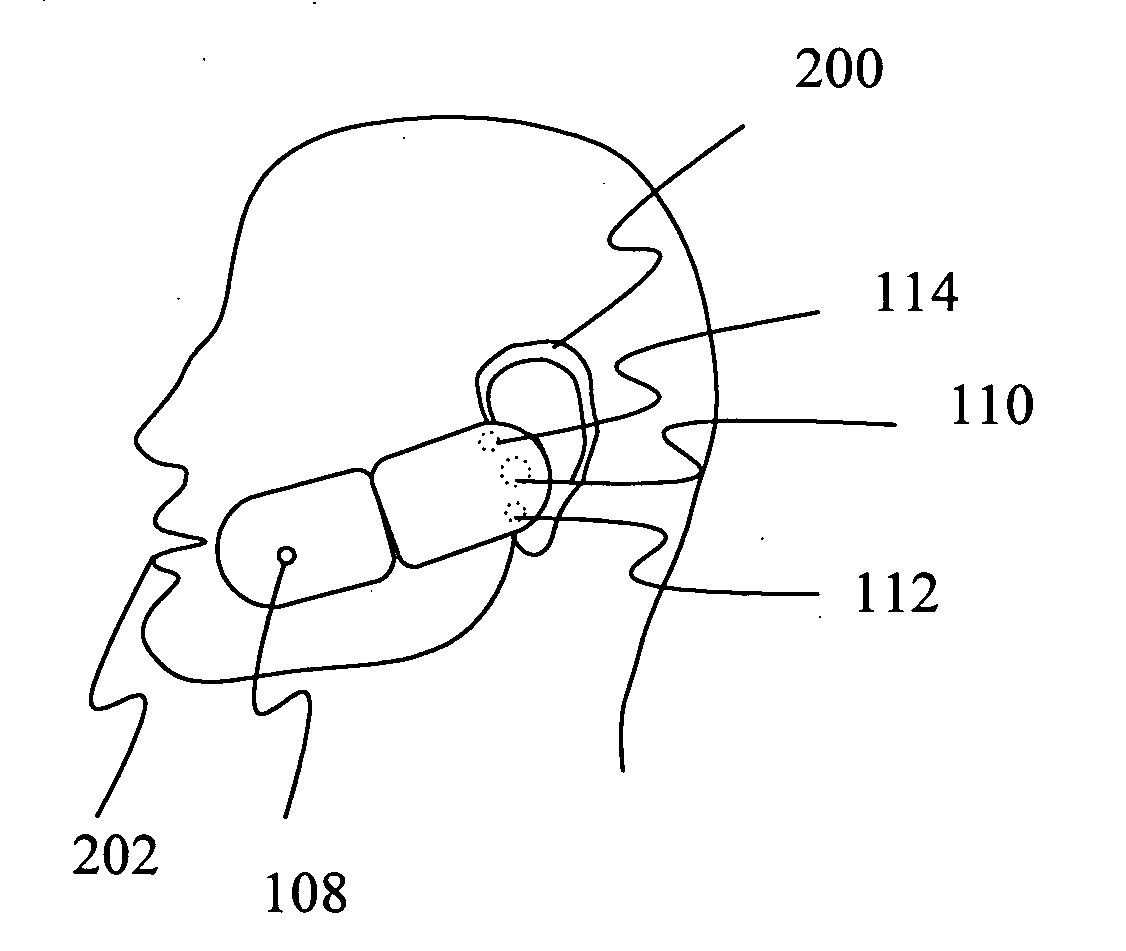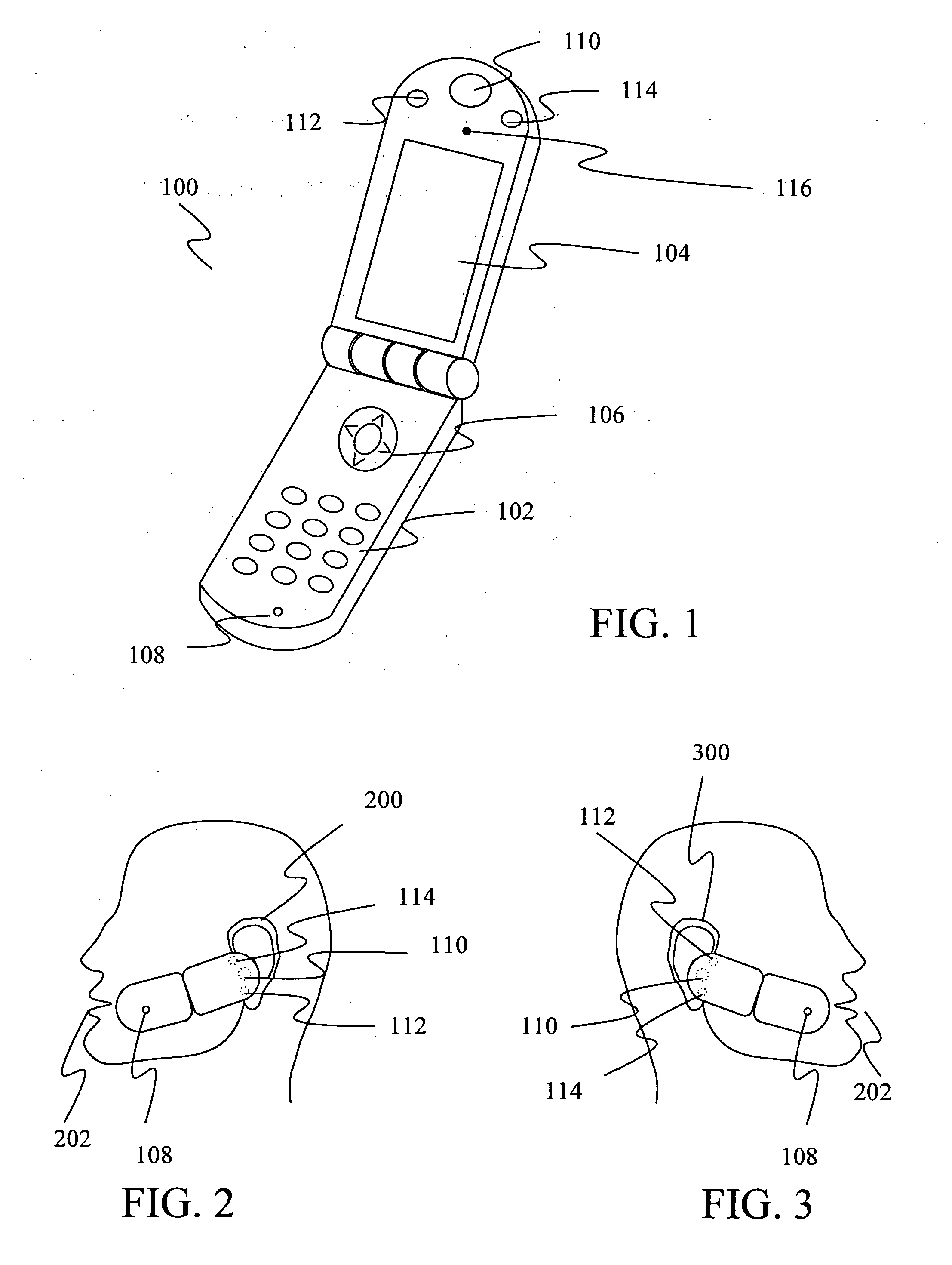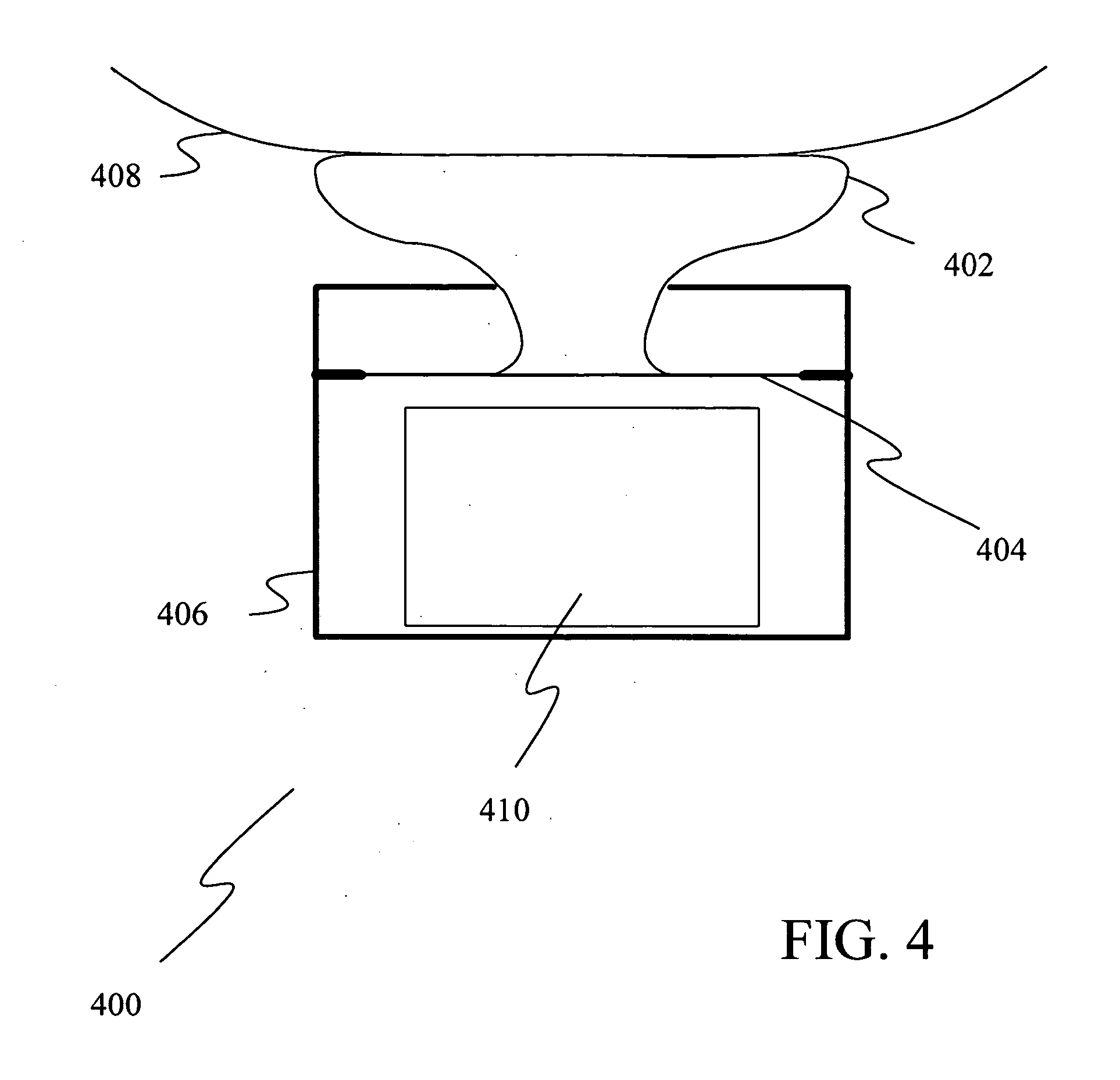Method and apparatus for multi-sensory speech enhancement on a mobile device
a multi-sensory, mobile device technology, applied in the direction of washing processes, applications, instruments, etc., can solve the problems of not being the system has not been able to remove all of the noise, and it is difficult to remove the noise of other people speaking in the background
- Summary
- Abstract
- Description
- Claims
- Application Information
AI Technical Summary
Benefits of technology
Problems solved by technology
Method used
Image
Examples
Embodiment Construction
[0023] Embodiments of the present invention provide hand-held mobile devices that contain both an air conduction microphone and an alternative sensor that can be used in speech detection and noise filtering. FIG. 1 provides an example embodiment in which the hand-held mobile device is a mobile phone 100. Mobile phone 100 includes a key pad 102, a display 104, a cursor control 106, an air conduction microphone 108, a speaker 110, two bone-conduction microphones 112 and 114, and optionally a proximity sensor 116.
[0024] Touchpad 102 allows the user to enter numbers and letters into the mobile phone. In other embodiments, touchpad 102 is combined with display 104 in the form of a touch screen. Cursor control 106 allows the user to highlight and select information on display 104 and to scroll through images and pages that are larger than display 104.
[0025] As shown in FIGS. 2 and 3, when mobile phone 100 is put in the standard position for conversing over the phone, speaker 110 is posi...
PUM
 Login to View More
Login to View More Abstract
Description
Claims
Application Information
 Login to View More
Login to View More - R&D
- Intellectual Property
- Life Sciences
- Materials
- Tech Scout
- Unparalleled Data Quality
- Higher Quality Content
- 60% Fewer Hallucinations
Browse by: Latest US Patents, China's latest patents, Technical Efficacy Thesaurus, Application Domain, Technology Topic, Popular Technical Reports.
© 2025 PatSnap. All rights reserved.Legal|Privacy policy|Modern Slavery Act Transparency Statement|Sitemap|About US| Contact US: help@patsnap.com



